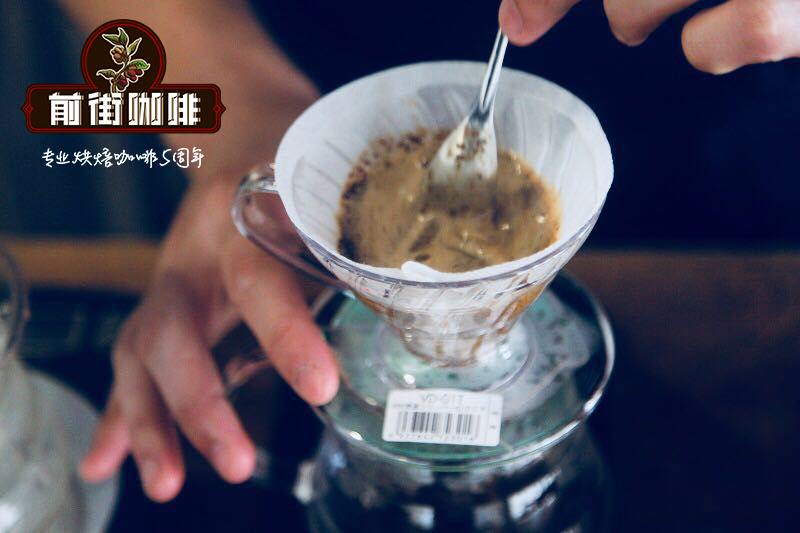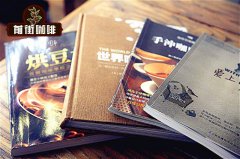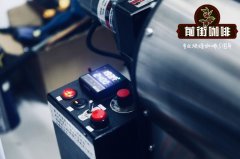How do you drink candle coffee? how does candle coffee taste? is candle coffee expensive?

Professional coffee knowledge exchange more coffee bean information please follow the coffee workshop (Wechat official account cafe_style)
Drima Zede is a product of Ninety Plus's sub-brand Level Up. It is produced in Cochel, Yegashefi, Ethiopia, and is treated in the sun.
Drima Zede is a local dialect and is said to mean "Best Approach". From years of experience in tanning Ethiopian beans, Ninety Plus has developed the spectrum of candle flavor: "cocoa, BlackBerry, plum, juice, flower, blueberry, dark chocolate".
The way Ninety Plus develops Level Up is quite special, which is different from the general boutique coffee which is completely focused on the producing areas. Different Level Up products highlight different flavor spectrum (Taste Profile), but the production area information is not so specific, for example, we do not know which washing plant a certain Level UP comes from. Since the launch of Level Up in 2013, many bean bakers have been happy to adopt it, proving that the brand and quality control of Ninety Plus can still be trusted.
Candlelight coffee bean hand flushing suggestion: [90 + candlestick hand flushing reference] Today, use key filter cup, 16g powder 32g water stew for 30 seconds, 89-90 degrees water temperature extraction, 1:15, medium and fine grinding small Fuji 3.5 second water injection to 110ml cut off water, wait for water drop and then slowly water injection, uniform speed, water level should not be too high, again water injection to 233ml stop, extraction time 2:15 seconds-rich sun sweet feeling You can fine-tune it according to your taste.
Sidamo grows in the southernmost Ethiopian plateau at an altitude of 4600-7200 feet (Sidamo province). It is a famous boutique coffee area in southern Ethiopia, bordering Kenya, southeast of Gemma, just south of the capital, usually sweet and loved by most people. its annual output is about 225000 bags / 60kg, with a smaller bean body than Longberry, with gray in the green, and a sun drying site in Sidamo. Coffee is placed in hemp net wooden frame, workers take turns in the sun exposure, manual stirring coffee, sun Sidamo is usually marked with G4 exit, washing Sidamo because the treatment process is more perfect, so most of them are exported at G2 level.
The coffee in Sidamo has a variety of flavors. Different soil types, microclimates and countless native coffee species, towering mountains, highlands, plateaus, valleys and plains, diverse topography, and the geology of the area belongs to nutrient-rich, well-drained volcanic soil. the depth of the soil is nearly two meters, and the surface soil is dark brown or brown. The biggest advantage of the area is that the soil fertility is maintained through the circulation of organic matter, using the withered leaves of the surrounding trees or the residual roots of the plants as fertilizer. Therefore, the coffee produced in cities and towns has obvious differences and characteristics. In 2010, Murray 2012, it continuously obtained the high score of CR92--94, the authoritative coffee evaluation website in the United States. Thus it can be seen that the raw beans in this area are extraordinary.
Sidamo Coffee beans are grayish, thick in some places and small in others, with soft and strong acidity, mellow and sweet and spicy. It is one of the courtyard coffees in the highlands of southern Ethiopia. Unlike ordinary African coffee, Sidamo has clear acidity, smooth taste and delicate floral smell.
Ethiopian sun tanning (high scaffolding tanning):
In the past, the Ethiopian sun exposure method used to spread wild coffee fruits directly on the mud ground for exposure. This method has two disadvantages:
1. After picking beans without special screening and treatment, uneven appearance and maturity are mixed together, the process is relatively rough, so the quality of coffee beans is unstable and prone to defective beans.
two。 Coffee farmers usually find an open space near their home to deal with it, so there are often a lot of impurities or dirt on the ground, and coffee is easy to get smelly.
The improved method of tanning, that is, to improve the two shortcomings of the traditional way:
1. When picking beans, only fully ripe crimson coffee cherries are picked. Before exposure, the beans will be screened for defects in the processing plant to make the beans look more average in size and maturity.
two。 Next, use tall wooden frames or whole scaffolding for the sun to avoid the risk of beans smelling on the ground. In the process of exposure, take good care of the beans so that the coffee beans can be evenly exposed to water; every three to five days, coffee workers will manually screen out defective and moldy beans. Therefore, by the end of the exposure, before the beans enter the market to remove the peel and flesh, a bright crimson coffee cherry is already a grade with few defects.
Candle candle coffee bean brand recommendation
The 90 + candle candle beans baked in Qianjie Coffee are fully guaranteed in terms of brand and quality. And more importantly, the performance-to-price ratio is extremely high, a pack of half a pound 227 grams, the price is only 90 yuan. According to the calculation of 15 grams of each cup of coffee powder, 15 cups of coffee can be made in a bag, which costs only about 6 yuan per cup, which is very cost-effective for the coffee shop to sell dozens of yuan a cup.
Qianjie coffee: Guangzhou bakery, the store is small but a variety of beans, you can find a variety of unknown beans, but also provide online store services. Https://shop104210103.taobao.com
Important Notice :
前街咖啡 FrontStreet Coffee has moved to new addredd:
FrontStreet Coffee Address: 315,Donghua East Road,GuangZhou
Tel:020 38364473
- Prev

What on earth is candlelight coffee? Is the candle Yega Chefe? how much is a cup of candle coffee?
Professional coffee knowledge exchange more coffee bean information please pay attention to the coffee workshop (Wechat official account cafe_style) 90 + beans are different from the general boutique beans, the name is from the flavor concept to the producing areas and cooperative farms. With the fame of Ninety Plus 90, Ethiopia's Sidamo candle is as hot as nekisse candle, which is owned by 90 +.
- Next

90 + Candle Coffee Bean roasting suggestion _ Candle Coffee beans how much is a packet _ Candle Coffee Flavor
Professional coffee knowledge exchange more coffee bean information please follow the coffee workshop (Wechat official account cafe_style) Sidamo candle candle coffee beans grow in the southernmost Ethiopian plateau between 4600 and 7200 feet (Sidamo province), is a famous boutique coffee area in southern Ethiopia, bordering Kenya, southeast of Gemma, just south of the capital, usually with obvious sweetness
Related
- Detailed explanation of Jadeite planting Land in Panamanian Jadeite Manor introduction to the grading system of Jadeite competitive bidding, Red bid, Green bid and Rose Summer
- Story of Coffee planting in Brenka region of Costa Rica Stonehenge Manor anaerobic heavy honey treatment of flavor mouth
- What's on the barrel of Blue Mountain Coffee beans?
- Can American coffee also pull flowers? How to use hot American style to pull out a good-looking pattern?
- Can you make a cold extract with coffee beans? What is the right proportion for cold-extracted coffee formula?
- Indonesian PWN Gold Mandrine Coffee Origin Features Flavor How to Chong? Mandolin coffee is American.
- A brief introduction to the flavor characteristics of Brazilian yellow bourbon coffee beans
- What is the effect of different water quality on the flavor of cold-extracted coffee? What kind of water is best for brewing coffee?
- Why do you think of Rose Summer whenever you mention Panamanian coffee?
- Introduction to the characteristics of authentic blue mountain coffee bean producing areas? What is the CIB Coffee Authority in Jamaica?

